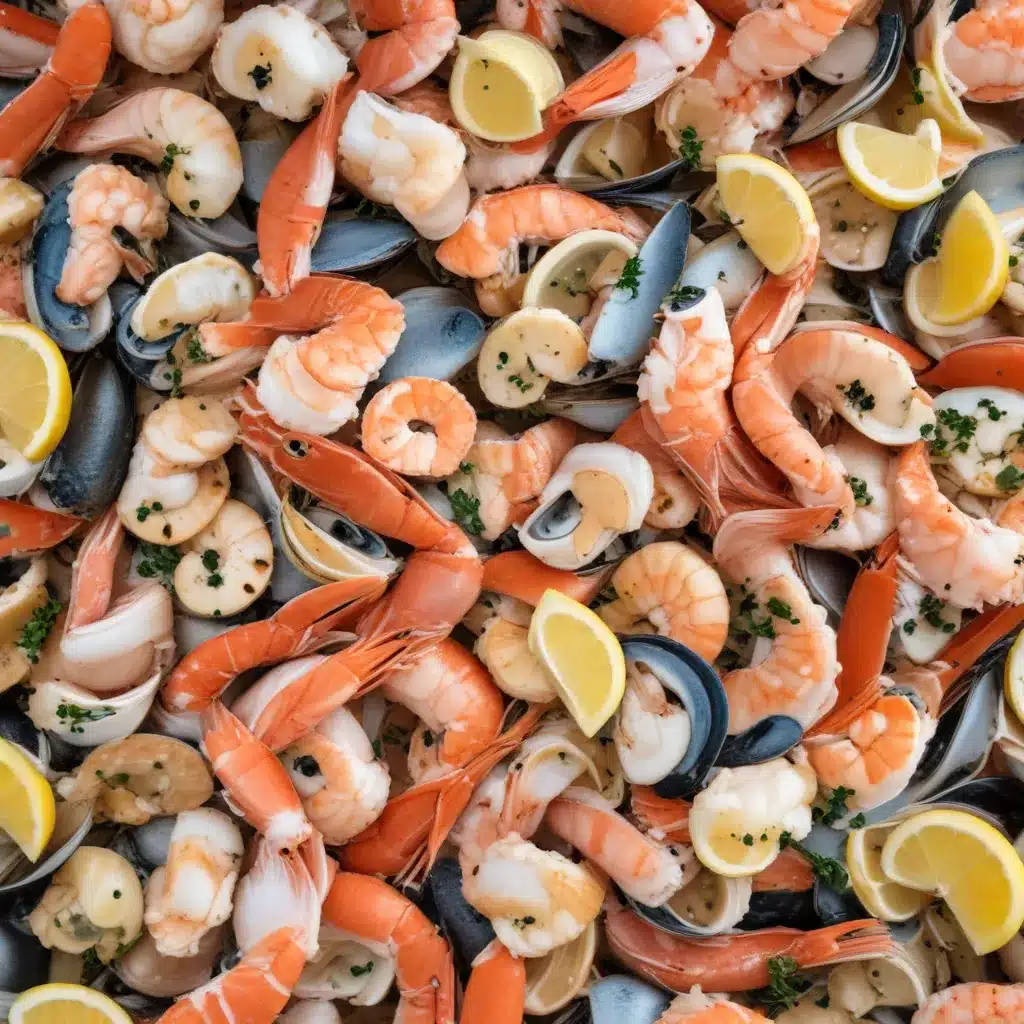
As a seafood dining expert for Fish Tales Cafe, I’m here to share my insights on the art of preserving the freshness and flavor of your cod and other delectable catches. Proper storage is the unsung hero in the journey from water to plate, locking in those mouthwatering juices and textures.
Refrigeration Techniques
The foundation of seafood storage lies in temperature control. Aim to keep your cod or other fresh fish between 32-39°F (0-4°C) in the fridge. This “Goldilocks zone” maintains the ideal balance – cold enough to inhibit bacterial growth, yet not so frigid that it damages the delicate flesh. For longer-term storage, the freezer is your ally, with an optimal temperature around 0°F (-18°C). Just be sure to wrap your fillets or whole fish tightly in plastic wrap or vacuum-seal them to prevent freezer burn.
Freezing Methods
Freezing is a seafood superhero, preserving your catch for months. The key is to freeze it as soon as possible after cleaning and portioning. Start by rinsing the fish under cold water, patting it dry, and placing the fillets or whole fish in airtight, freezer-safe bags or containers. Squeeze out any excess air before sealing to lock in freshness. For maximum shelf life, consider investing in a vacuum sealer – the removal of air is a game-changer for preventing freezer burn.
Proper Packaging
The vessel you choose for storage is just as important as the temperature. Avoid flimsy plastic bags, which can allow air exposure and moisture loss. Opt for sturdy, airtight containers or heavy-duty freezer bags. Labeling with the contents and date is also a must, ensuring you rotate your stock and never forget about that hidden treasure trove in the back of the freezer.
Temperature Control
Maintaining a consistent, optimal temperature is crucial for seafood storage. Resist the urge to leave the fridge or freezer door open for prolonged periods, as this can cause dramatic temperature fluctuations. Keep your appliances well-organized, too – overcrowding inhibits airflow and leads to warm spots. Regular cleaning and defrosting will also help your coolers run at peak efficiency.
Humidity Management
Excess moisture is the enemy of fresh seafood. Wrap fillets or whole fish tightly in plastic or foil to prevent freezer burn and dehydration. In the fridge, store your seafood on a bed of ice, replacing it as needed to keep things chilly and dry. For long-term freezer storage, consider investing in a vacuum sealer or using airtight, moisture-resistant containers.
Shelf-life Extension
With proper storage techniques, you can extend the lifespan of your seafood significantly. Cod, for instance, can remain fresh in the fridge for 3-4 days, or in the freezer for 4-6 months. Other delicate fish like halibut or flounder may last a bit less, while heartier varieties like tuna or salmon can go for 5-7 days in the fridge and 6-9 months in the freezer.
Marinade Preparation
Elevating your seafood’s flavor is as easy as a well-crafted marinade. For cod, try a simple blend of lemon juice, olive oil, garlic, and fresh herbs. Marinate the fillets for 30 minutes to an hour before cooking to infuse them with delectable seasoning.
Cooking Techniques
When it’s time to enjoy your seafood, explore a variety of cooking methods to suit your mood and taste buds. Pan-searing, baking en papillote, or grilling are all excellent options that highlight the natural sweetness of cod and other white fish. For a more hands-off approach, poaching or steaming are wonderfully gentle techniques that preserve the tender texture.
Seasoning Profiles
Complement the delicate flavor of cod with a simple seasoning blend of salt, pepper, lemon, and fresh herbs. For a global flair, try coating the fillets in a Parmesan-herb crust, or whipping up a vibrant mango salsa to serve alongside. The possibilities are endless for elevating your seafood dishes.
Environmental Impact
As a seafood lover, I’m also conscious of the environmental impact of our choices. Seek out sustainably sourced cod and other fish, opting for local, seasonal varieties when possible. This not only supports responsible fishing practices but also minimizes the carbon footprint of your meals.
Waste Reduction
When it comes to seafood storage, minimizing waste is key. Meticulously plan your portions, freezing any extras in measured servings to avoid spoilage. For fish bones, scales, and trimmings, consider composting or finding other eco-friendly disposal methods in your area.
Pathogen Prevention
Proper seafood handling and storage are essential for food safety. Always keep raw fish separate from cooked or ready-to-eat items, and thoroughly clean all surfaces and utensils that come into contact with the seafood. Adhere to recommended refrigeration and freezing times to steer clear of harmful bacteria like salmonella or listeria.
Thawing Protocols
When it’s time to enjoy your frozen seafood, resist the temptation to thaw it at room temperature. Instead, transfer the fillets or whole fish to the refrigerator and allow them to thaw gradually over 12-24 hours. This slow, controlled thawing process preserves the texture and prevents bacterial growth.
Live Shellfish Maintenance
For those lucky enough to have access to live clams, oysters, or mussels, the storage game changes a bit. Keep these bivalves in a breathable mesh bag or open container, nestled on a bed of damp paper towels or seaweed in the fridge. Resist the urge to seal them tightly, as they need access to oxygen to stay alive and fresh.
Whether you’re a seasoned seafood enthusiast or just starting to explore the briny depths, mastering the art of seafood storage is key to unlocking the full potential of your catch. By following these best practices, you’ll be able to savor the fresh, flavor-packed delights of cod and other seafood long after the last cast. Happy fishing, and bon appétit from Fish Tales Cafe!

